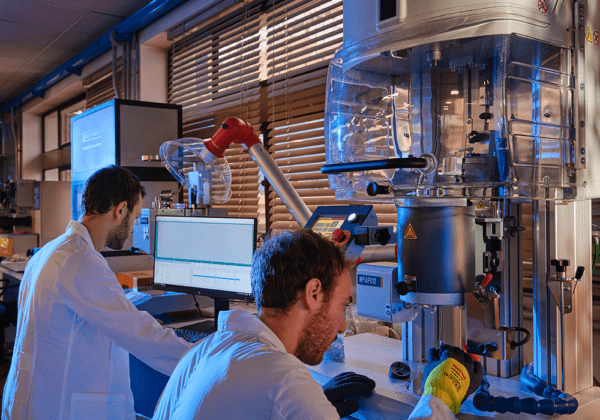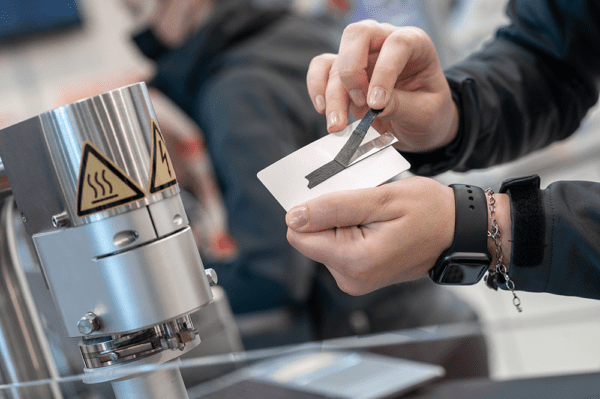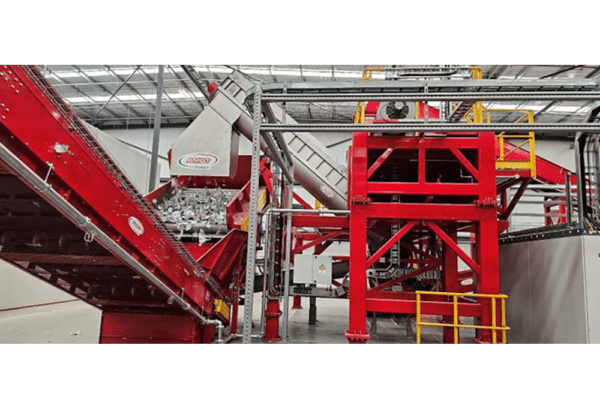
How Can Data and Insights Pave Your Pathway to Net Zero with Equity Energies?
|
Getting your Trinity Audio player ready...
|
Pictured: Adam Baker, Partnership Director at Equity Energies
When it comes to Net Zero, the plastics industry is signalling great intent and making strides to transition to increased circularity and the adoption of more sustainable business practices. Whilst it’s important to celebrate, and continue to accelerate this progress, there is value in taking a step back, to ensure the foundations of progress are stable, and capable of underpinning future success.
This is where baselining, data and insight all play a fundamental role in the process of decarbonisation and reaching Net Zero.
Baselining is the bedrock of Net Zero
Baselining is the process of measuring where you currently are in terms of your energy consumption and carbon impact. It means knowing your starting point, so reduction targets can be based on the known impact you’re making. It’s also a vital component in being able to measure the ongoing impacts that each step along your Net Zero pathway will have – which is significant given that things will be constantly changing to reflect organisational changes.
In the rush to signal intent around climate action, many organisations across every sector have been guilty of setting carbon reduction targets without a clear view of their baseline. While not the greatest example of best practice, it’s never too late to measure, even if it means published targets and timelines need to be retrofitted into a more ambitious pathway design.
Regardless, the visibility that comes through proper baselining is perhaps the most powerful part of the Net Zero process. Much like finding your location in a maze; designing your pathway becomes much easier when you know your starting point.
Turning data into insight
Once you understand your energy consumption and carbon impact from an organisational level, focus can be brought to the micro picture.
It’s here that data-accuracy is key, in this case when it comes to consumption data. Domestic smart meters have suffered from something of a perception problem in recent years. But the commercial equivalent – a tool called MY ZEERO, which provides real-time energy consumption data in real-time and at circuit level – is a very different story.
This technology, or really the data it provides and the actionable insights that can be developed, is what will underpinstry plastics industryRemove term: sustainability sustainabilityRemove term: sustainable plastics sustainable plasticsRemove term: uk plastics uk every organisation’s own unique Net Zero pathway and every decision and action taken.
We saw a recent example that clearly makes the point, even if it is markedly different from plastics production; a meat and dairy wholesaler, which relied on several large refrigeration units to store product.
Each unit was the same make and model, installed at the same time, and serviced systematically. By monitoring energy consumption at appliance level, we were able to see that one unit had a far higher consumption rate. An immediate maintenance check uncovered a fault, which was causing the unit to operate inefficiently. Once the fault was rectified, the unit’s consumption came back in line with the others and prevented the wholesaler from wasting energy and, more importantly, money.
The principle at play is highly relevant; anomalous data identified, and the issue and an improvement planned and implemented. Now, transpose the issue from that of a refrigeration unit – which is relatively inexpensive to fix – to the intricacies of the plastics production line, and both the issues of cost, and interruption of the production process, are dramatically different.
Again, this is where the value of this consumption insight is incomparable; it provides the tool for identifying areas of improvement, the data that supports the justification of the improvement project (which could include the investment required, and even potential downtime of the production process), and subsequently the monitoring of its impact post-implementation.
Underpinning every step forward
In fact, there is no aspect of a Net Zero pathway which won’t be optimised through the combination of data insight and human intelligence.
As a simple example, a significant power outage or even a routine maintenance cycle can be enough to reset an optimised Building Management System (BMS), causing operating times to change and the HVAC system to operate at the wrong times, potentially wasting energy. Unless this is manually investigated, it can easily go unnoticed, causing the system to run while no one is in the building or facility. However, having real-time visibility of energy consumption across every aspect of an organisation will flag the discrepancy immediately and enable it to be rectified.
In contrast, a manufacturer that has had solar panels installed on its roof would, by pure visibility, be signalling it is deploying a more advanced energy strategy; on-site generation reducing grid reliance and carbon impact¹. Yet time and again we have seen solar set-ups which are not monitored effectively.
The worst-case scenario here is that a solar array is generating significant energy (especially across an industrial-scale site with large roof space), which, due to any number of practical or operational issues (even down to legacy wiring in older buildings) is not being consumed on-site. Instead, more energy than is needed from the grid is being unnecessarily purchased, costing the organisation money it doesn’t need to spend.
When looking at the up-front investment in solar, not optimising the system and paying for ‘extra’ energy from the grid can extend the pay-back period significantly. This is before you consider that there could be the opportunity to sell back excess energy generated to the grid – something that is only possible if you understand your energy consumption at a granular level.
Paving the pathway with intelligence
There is an abundance of technologies that can be used by the plastics industry to support the energy transition. The truly revolutionary technology – from an energy management perspective – is that which provides the insight, and intelligence that will underpin and optimise every other aspect of the Net Zero pathway.
To find out more, visit www.equityenergies.com
¹ Solar Energy UK – Powering Up Britain Net Zero Growth Plan & Energy Security Plan
Read more news from Equity Energies here.
Equity Energies
07767 268888
Website
Email






